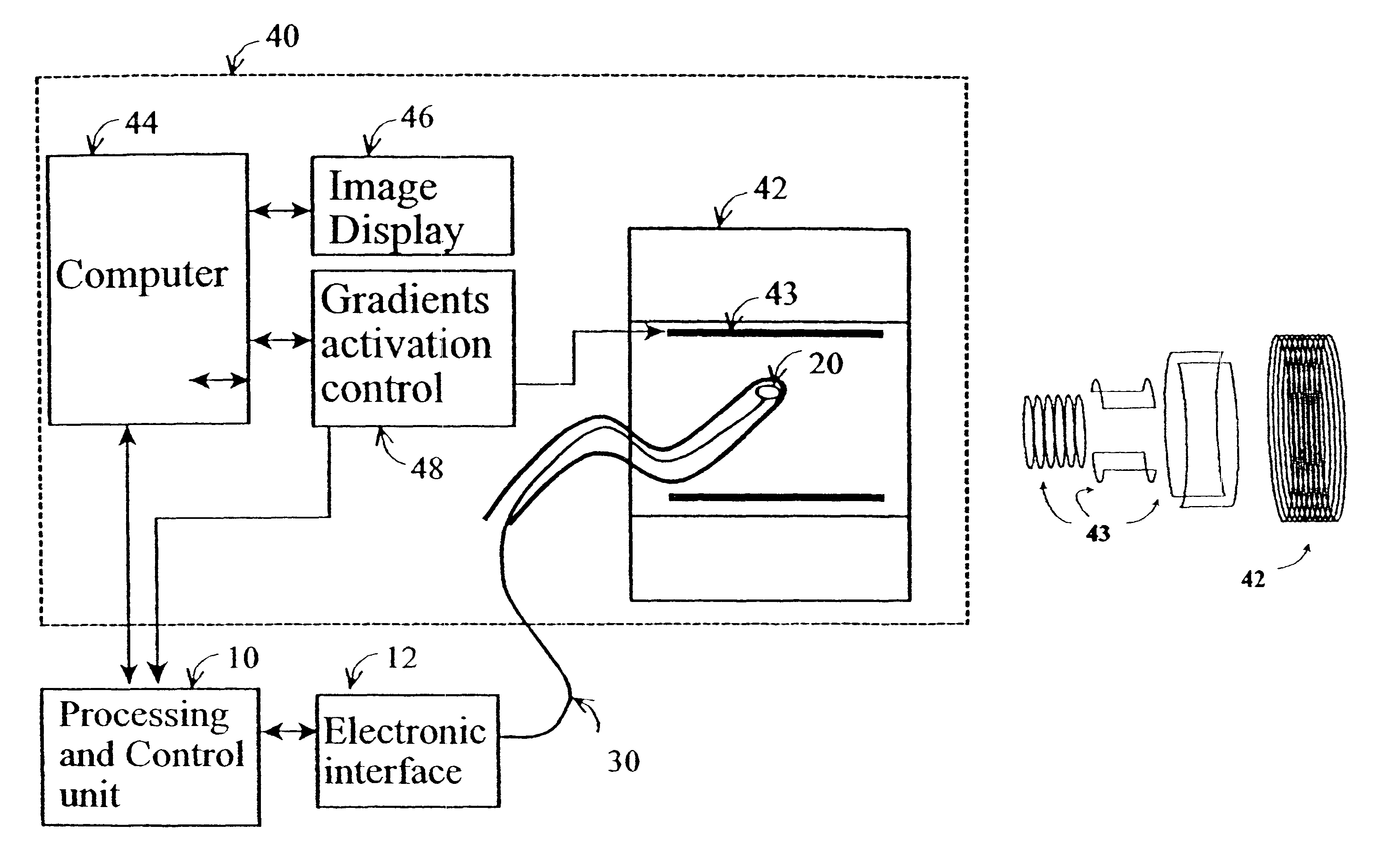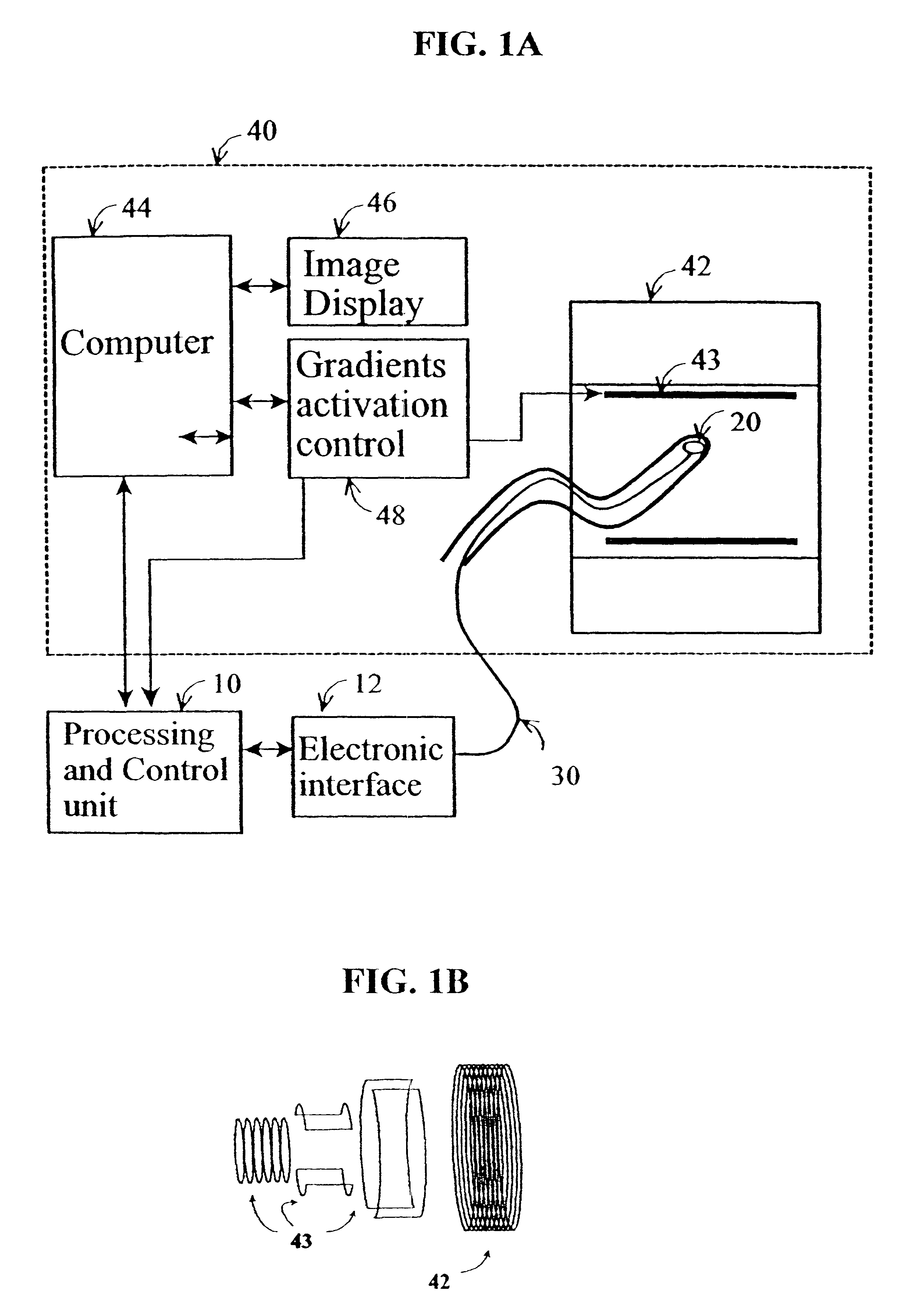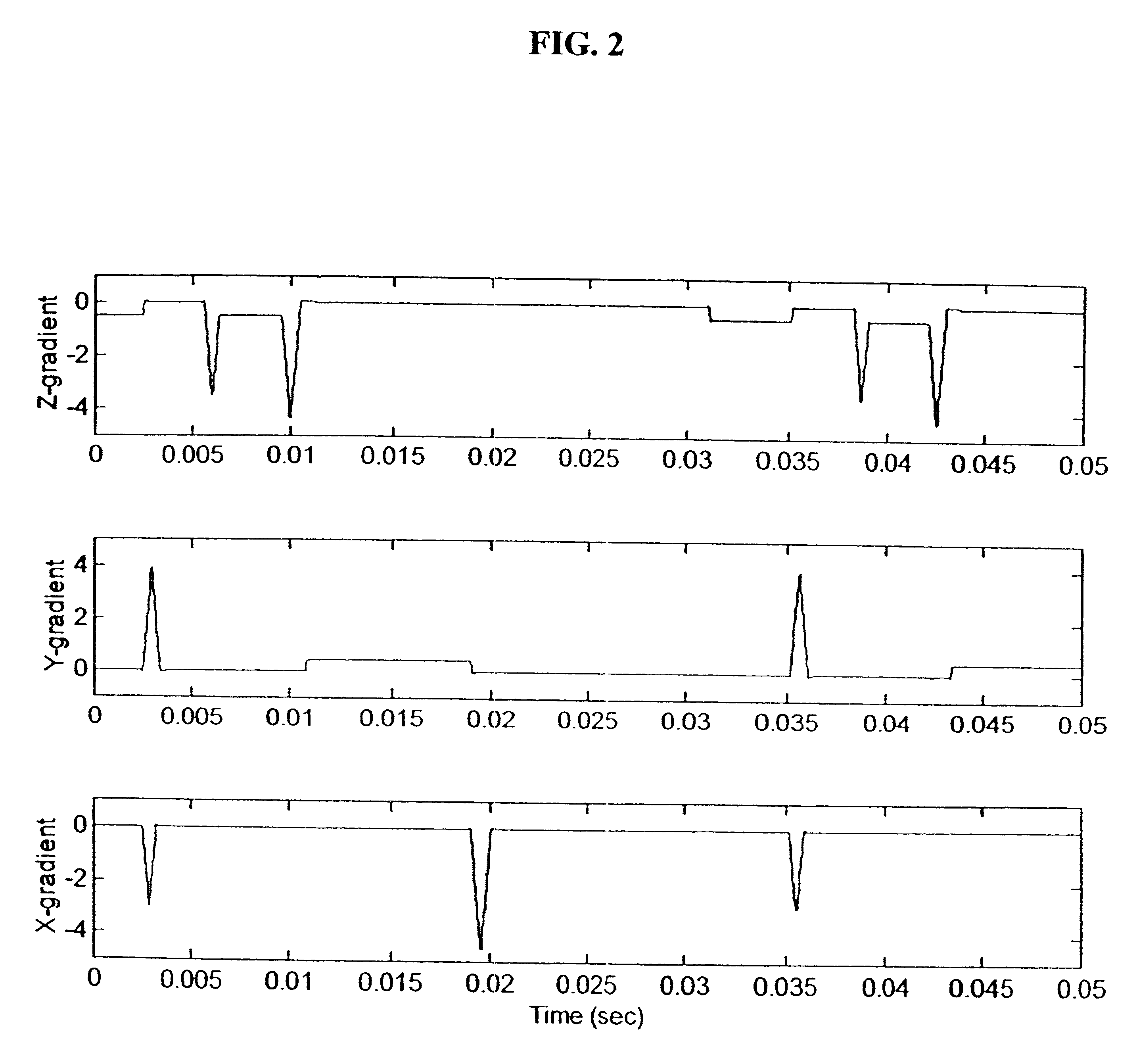Method and apparatus to estimate location and orientation of objects during magnetic resonance imaging
a technology of magnetic resonance imaging and location and orientation, applied in the field of method and apparatus to estimate the location and orientation of objects during magnetic resonance imaging, can solve the problems of limiting the application of sterotaxis and frameless techniques to the use of rigid devices, and affecting the accuracy of orientation estimation
- Summary
- Abstract
- Description
- Claims
- Application Information
AI Technical Summary
Benefits of technology
Problems solved by technology
Method used
Image
Examples
Embodiment Construction
Referring now to FIG. 1, a typical MRI system (40) has several modules which are specifically relevant to the current invention: the three gradient coils (43), the gradient coils control unit (48), and the image display (46). The exact implementation of the invented methodology depends on the MRI mode of imaging, and the following presentation relates, as a typical example, to a standard MRI spin-echo imaging mode. During the spin-echo protocol, repeated generation of magnetic fields by the 3 gradient coils provide the spatial encoding of the received MR echo and enable the reconstruction of the image. A sample sequence is given in FIG. 2 (recorded from a Signa MRI system, General Electric, USA). For this sequence the system activates the Z-gradient coil for "slice selection", simultaneously the X and Y gradient coils for "phase encoding" and the X gradient coil for the "read out" phase.
The gradient control unit (48) provides the processing unit (10) with real-time presentation of t...
PUM
 Login to View More
Login to View More Abstract
Description
Claims
Application Information
 Login to View More
Login to View More - R&D
- Intellectual Property
- Life Sciences
- Materials
- Tech Scout
- Unparalleled Data Quality
- Higher Quality Content
- 60% Fewer Hallucinations
Browse by: Latest US Patents, China's latest patents, Technical Efficacy Thesaurus, Application Domain, Technology Topic, Popular Technical Reports.
© 2025 PatSnap. All rights reserved.Legal|Privacy policy|Modern Slavery Act Transparency Statement|Sitemap|About US| Contact US: help@patsnap.com



